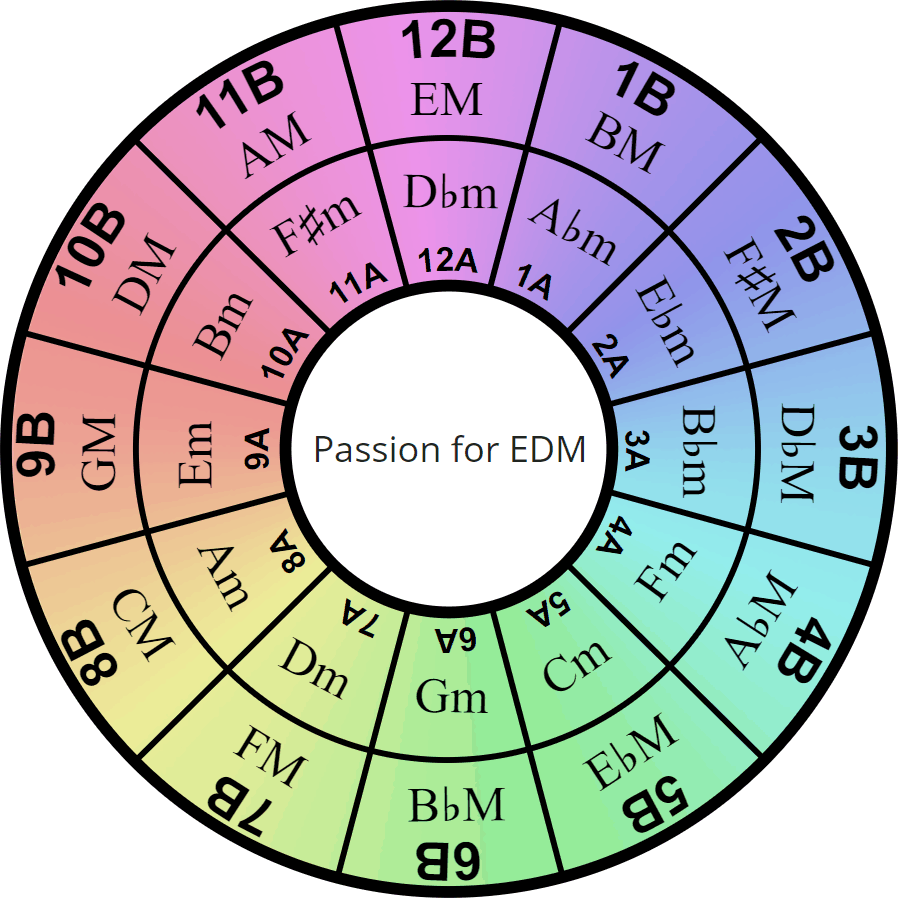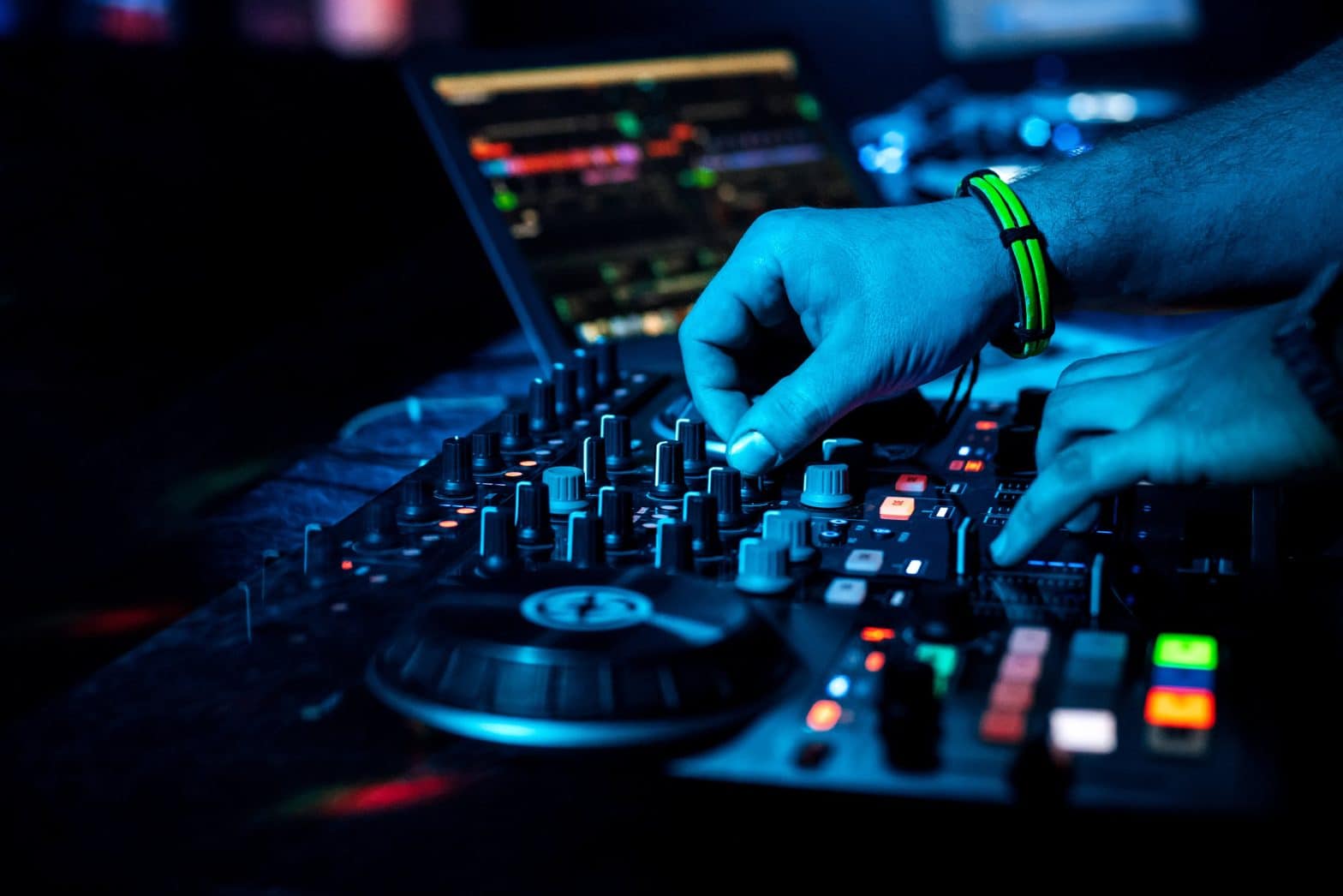We can become better at mixing trance songs (tracks) as a DJ by practicing. We can become better faster by practicing mixing with the right songs.
Good trance songs for practicing mixing as a DJ have at least one characteristic that can make mixing harder, and that characteristic differs enough between the current and the next song. These characteristics can be tempo, non-percussion elements, key, energy, and time signature.
This post explains many song characteristics by which we can choose songs for practicing mixing. Also, this post gives some song examples with such characteristics.
Trance Song Characteristics for Practicing Mixing
Every song has characteristics, and some of these characteristics can determine how difficult it is to mix from one song to another. These characteristics are tempo, non-percussion elements, key, energy, and time signature. Generally, the more these characteristics differ between the two songs, the harder the mixing is between them, and the better it is for practicing.
This section explains the mentioned song characteristics. Each characteristic explanation includes the things that can make the characteristic harder to mix.
Tempo
As far as I know, a song’s tempo is always in BPM (beats per minute) and is how fast the song plays at default speed. We can play a song at a different tempo. For example, most DJ controllers I know can adjust the tempo of a song.
This website has a blog post about the common tempos of EDM genres, for which I did much research. According to that blog post, trance songs usually have a tempo within the 125—150 BPM range.
DJ Intentions for Changing the Tempo
A tempo decrease of the current song can decrease the audience’s energy level, and a tempo increase of the current song can increase the audience’s energy level. A decrease or increase in the audience’s energy level doesn’t have to be bad or good since it probably depends on the intentions of the DJ.
When the DJ changes the song’s tempo, the audience might hear that. The audience can probably hear a more abrupt tempo change easier than a more subtle one.
The audience might recognize that the DJ plays a song at a different tempo than its original tempo since they might know that song well enough for that. Probably the more the tempo differs from its original tempo, the easier the audience might notice it.
It does not have to be bad or good that the audience hears a tempo change or knows that the DJ song plays at a different speed since it probably depends on the intentions of the DJ.
Maximum Tempo Deviation Guideline
It can sound bad (which is opinion-based) when we play a song at a different tempo than its original. According to Digital DJ Tips, some people choose not to deviate more than 5% of the song’s original BPM, and some people not even more than 2% or 3%.
For example, we can maximally deviate a 138 BPM song to 145 BPM (105 x 138 / 100) or to 131 BPM (95 x 138 / 100). Another example, we can maximally deviate a 126 BPM song to 132 BPM (105 x 126 / 100) or to 120 BPM (95 x 126 / 100).
When we want to mix a song with a BPM that is more than 5% different from the BPM of the current song, we can still do it if it differs not more than 10%. We can do such mixing by changing the current song’s tempo and the next song’s tempo.
For example, we want to mix from a 121 BPM song to a 138 BPM song. We can change the tempo of the 121 BPM song to 131 BPM (105 x 138 / 100), and we can change the tempo of the 138 BPM song to 131 BPM (95 x 138 / 100).
Good Songs for Practicing by Looking at Their Tempo
When looking at the tempo, the easiest way to mix two songs is probably always when they have the same tempo since we don’t have to change the tempo of the songs. Therefore, mixing songs can become harder when they maximally deviate 5% in tempo from each other. However, the mixing can become even harder when the songs deviate in tempo at least 5% and maximally 10% from each other.
Non-Percussion Elements
Percussions (such as drums) are important elements in trance songs. However, trance songs have other well hearable and important non-percussion elements, such as vocals and synthesizers. This section explains why mixing songs with vocals can be hard, but this explanation can be the same for other non-percussion elements such as synthesizers.
When looking at the vocals, the easiest way to mix two songs is probably always when they don’t have a vocal since the mixing can interrupt/skip a part of a hearable vocal, which can sound bad.
Mixing from a song with a vocal to another song with a vocal can also be harder than mixing to or from a song without a vocal. Such mixing can be harder since, at the moment of mixing, the audience can hear stacked vocals on top of each other, and it is possible again to interrupt/skip a part of a hearable vocal. Stacked vocals on top of each other can sound bad since the individual vocals can become harder to hear.
Key (Harmonic Mixing)
As far as I know, every song is in a certain key. A key determines which notes sound musically correct in a song. For example, we can play these notes with a synthesizer, use these notes for singing, and a drum sound can have a pitch the same as one of these notes.
Harmonic mixing is mixing from a song in a certain key to another song in a certain key that sounds musically correct. A method we can use to choose harmonically mixable songs is by using the Camelot Wheel.
A Camelot Wheel is visible in the image here below. In this image, we see keys, such as Cm and F♯M. When a key has a lowercase m, it is a minor key, and when it has an uppercase M, it is a major key.

A Method to find the key of a song is by using DJ software such as rekordbox, which can show the key of a song.
We can use the Camelot Wheel in a basic way, which we can do by finding the key of the song in the Camelot Wheel that we want to mix. The fields left, right, above, and below are the harmonically mixable keys from the found key. For example, we can harmonically mix a song with the key A minor (Am) with songs in the keys E minor (Em), D minor (Dm), and C major (CM).
When To Harmonically Mix Songs
As already mentioned, the energy characteristic of a song could make the mixing harder, which a section below explains in more detail. Also, the DJ’s audience has an energy level, which the DJ should read/find out. It can be good to match the song’s energy level with the audience’s energy level.
For example, the audience might have a low or high energy level. When we play a low-energy level song to an audience with a high-energy level, the audience probably doesn’t like that. Therefore, choosing a high-energy level song for a high-energy level audience can be good.
It might be possible that a DJ has songs to play for a chosen energy level, but it is impossible to mix these songs with the current song harmonically. In this case, the DJ should probably still play a song with the chosen energy level, without minding that it is not harmonically mixable.
The reason to prefer energy level over harmonically mixable is that some mixing techniques can mask that the track is not harmonically mixable. However, there are no mixing techniques to mask the energy level since the song keeps playing after it is mixed.
The mixing techniques to mask not harmonically mixing (these techniques are out of the scope of this post) can be hard and something extra to learn. Therefore, harmonically mixing is generally easier than not harmonically mixing.
Many trance songs have percussion (like drums) only sections, such as the intro and outro. It can be easier not to harmonically mix in these percussion-only sections than in the other sections since many percussion pitches can be too hard to hear, such as the pitches of hi-hats.
Energy
As already mentioned, every trance song has a certain energy level. This energy level can be opinion-based, and software such as Mixed In Key can provide the song’s energy level according to its logic.
To make things simple, we can categorize songs by energy. For example, some songs have a relatively high energy sound, some have a relatively more low energy sound, and some have a sound between low and high energy. This post uses such categories from this example.
As far as I know, three things can influence the song’s energy: tempo, the brightness of sounds, and crowdedness.
Tempo. Generally, the faster the tempo of a song, the higher its energy level, but not always. For example, a song in half-time can feel half its tempo in common time. The tempo that tools such as rekordbox can show us is the common time tempo.
The brightness of sounds. As far as I know, most of the time, the more bright sounds a song has, the more energy the song has. Also, when sounds become brighter, the song’s energy can increase.
I believe that the brightness of songs doesn’t make mixing songs easier or harder. However, I believe that when the difference is too big (opinion-based) between two songs when looking at brightness, the less bright song can sound dull.
Crowdedness
A song can feel crowded when it plays many elements together or when one or more elements have a busy pattern. When songs feel crowded, they can also feel busy. However, if a song is crowded or not is opinion-based.
Some songs can feel minimalistic, and when looking at songs, we can see minimalistic as the opposite of crowded, to make things easier. A song can feel minimalistic when it plays a minimal number of elements together or when elements have a minimal pattern. If a song is minimalistic or not is also opinion-based.
For example, when a song plays a hi-hat pattern with a hit on every 16th note in a bar, it can increase the song’s energy level. Another example can be that a song plays long sustained notes of a bar long (which is common for pads) that can decrease the song’s energy level.
Most of the time, the more crowded a song is, the higher the energy level.
It can be harder to mix a crowded song than a minimalistic one when we want to mix from a minimalistic song. The energy level difference between a crowded song and a minimalistic song can be too much.
To make mixing easier, we can make the difference between a crowded song and a minimalistic song less big by mixing to a song that is between minimal and crowded.
Mixing from a crowded song to another crowded song can also be harder than mixing from a crowded song to a minimal song. It can be harder since two crowded songs on top of each other can sound too crowded, like chaos.
Time Signature
As far as I know, every song has a time signature, and the most common time signature is 4/4 (common time).
Wikipedia mentions that a time signature is a notational convention used in Western musical notation to define each bar’s number of beats and the note value of a beat.
When looking at time signatures, the easiest way to mix two songs is probably always when they have the same time signature since the mixing can misalign the beats of the songs, which can sound bad. So we can make the mixing harder by mixing songs in a different time signature.
Trance Song Examples for Practicing Mixing
Here are some trance songs that can be good for practicing mixing as a DJ. I sorted these songs by one characteristic that can make the mixing harder, but these songs still can have multiple characteristics.
Trance Songs With a Tempo of 125 BPM
Here are some trance songs I chose with a tempo of 125 BPM.
A 125 BPM song in the key C minor: Dennis Sheperd & Freak E Beatz – Break the Ice
A 125 BPM song in the key A minor: KhoMha & Nezzah – Magia
A 125 BPM song in the key A major: Chicane – Sailing
Trance Songs With a Tempo of 150 BPM
Here are some trance songs I chose with a tempo of 150 BPM.
A 150 BPM song in the key G minor: Binary Finary – 1998
A 150 BPM song in the key A minor: Pawlowski – Cosmic Sequencer
A 150 BPM song in the key G major: UltraBooster feat. GIhan – Forever (Claude Lambert Remix Edit)
Trance Songs with Vocal Non-Percussion Elements
Here are some trance songs I chose with well-hearable and important vocals as non-percussion elements.
A 130 BPM song in the key G major: Gareth Emery feat. Christina Novelli – Concrete Angel
A 125 BPM song in the key G minor: Giuseppe Ottaviani & April Bender – Something I Can Dream About
A 128 BPM song in the key D minor: Above & Beyond and Justine Suissa – Almost Home (Above & Beyond Club Mix)
Low Energy Trance Songs
Here are some trance songs I chose, and I think these songs have low energy.
A 126 BPM song in the key D major: 3LAU feat. XIRA – Tokyo (Fatum Remix)
A 120 BPM song in the key D minor: Roger Shah presents Jukebox 80s – Firebird
A 122 BPM song in the key B minor: Gabrielle & Eric De La Vega – Bahia Noctura
High Energy Trance Songs
Here are some trance songs I chose, and I think these songs have high energy.
A 136 BPM song in the key C minor: Coast 2 Coast feat. Discovery – Home (Maarten De Jong Extended Remix)
A 138 BPM song in the key A minor: David Forbes & Mallorca Lee – The Master
A 136 BPM song in the key A major: AMTM – Barracuda
Trance Songs Not in the 4/4 Time Signature
Trance has a 4/4 time signature, but some trance subgenres have songs that are completely or partly in a non 4/4 time signature, which is pretty uncommon, as far as I know. For example, Hallucinogen’s song “Snakey Shaker” changes at 2:17 minutes to a 3/4 time signature. Another example is “Something New” by Jikkenteki in the 5/4 time signature (source: Trance Music Guide: Inside Trance Music History and Subgenres, Psy and Goa trance with non-4/4 time signatures, Hallucinogen – Snakey Shaker).
A 142 BPM song in the key D major: Hallucinogen – Snakey Shaker
Jikkenteki – Something New. I haven’t found the BPM and the key of the song.
Closing Words
Hopefully, you have learned something about how we can choose trance songs good for practicing mixing as a DJ.
If you like this post, look at some other posts on this website since you might also like them.
You can share this post when you know someone who likes to learn more about how we can choose trance songs good for practicing mixing as a DJ.

